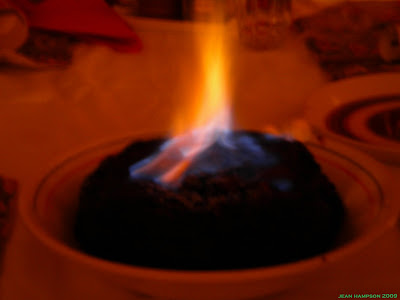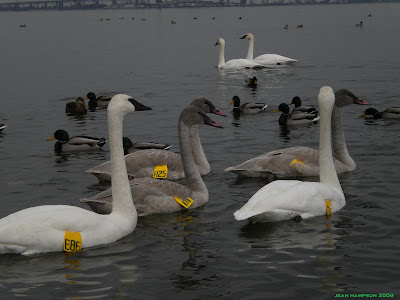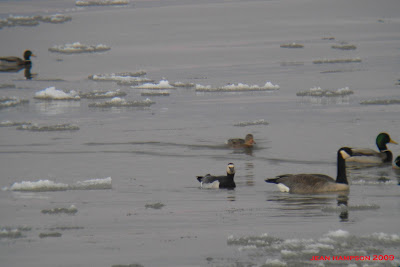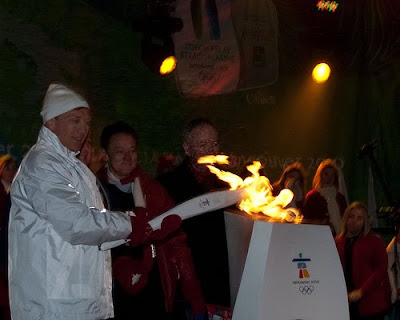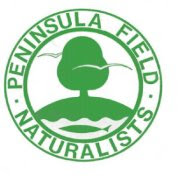
Susan of The Life of a Bird Tour Leader hosts
I and the Bird #114 . Many blogs from around the world, so sit back with your favourite organic shade-grown coffee and enjoy.
November 29
On the last Sunday of November, Jean and I attended the OFO Niagara River Gull Watch. I checked the Weather Network early that morning and the rain previously forecasted for the day would not occur until late in the afternoon. That was promising. This was a gull watch and standing in one spot for an hour or more while it rained on a cold November day would not be fun.
This was our third year of attending the OFO organized trip and we arrived early to obtain an advantageous spot for the scope and ensure we did not miss any exciting gulls. Though we arrived early last year, the trip leaders and a small number of birders spotted a Thayer's Gull before our arrival and it was not to be observed again during the time we spent at the Adam Beck overlook.
This year we had a different result. We set up our scope before the arrival of trip leaders Jean Iron and Ron Tozer and began to scan the white dots on the river below.
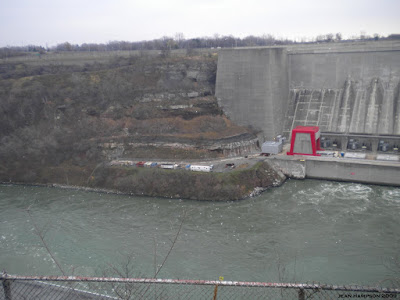
The overlook at the Sir Adam Beck Generating Station provides an excellent view of gulls that congregate to capture fish from the outflows of both the Sir Adam Beck and Robert Moses Generating (U.S. side) stations. The imaginary line you can see running down the centre of the river separates Canada from the United States.
Ron set up his scope to my immediate left and soon found a Thayer's Gull standing on a rock at the bottom of the Niagara Gorge. At first, there was some confusion in observing the Thayer's Gull. As Ron described, it was standing at the end of a pipe. Unbeknownst to me, there were two pipes in this location. Luckily I picked the right one (the vertical pipe running down the slope of the gorge). To the right of the Thayer's Gull was a horizontal pipe with a few Herring Gulls standing on it. Though it was in the field of view I did not see the horizontal pipe. When Jean looked through the scope she only observed the horizontal pipe. There was no gull at the end of the pipe! Jean would eventually view the Thayer's Gull (lifer #289) and soon after that I would see the horizontal pipe.
Without the experience of the trip leaders I believe there was no way I would have identified this gull as a Thayer's. The mantle is only slightly darker than that of a Herring Gull. The dark eyes of a Thayer's Gull help confirm the identification. Mental note, check eye colour next time I am birding on the Niagara River.
Before the gull disappeared our birding friend Anne arrived and she too was able to observe her lifer Thayer's Gull. We car pooled with Anne and her sister on the OFO Long Point trip earlier this year and it was our turn to play hosts.

Other gulls observed at Adam Beck included, 1 adult and 1 juvenile Iceland (#193 for the year), Bonaparte's, 1 Great Black-backed, 2 Lesser Black-backed (# 194) and Glaucous (1).
The California Gull, observed by Jean Iron on November 21, was not seen. It was last reported above the Falls, upstream from the Three Sisters Islands (11/28).
The next stop for the trip was the Whirlpool.

Here amongst the many, many Bonaparte's Gulls we looked for Little Gulls.

Jean looking for a Little Gull near the Spanish Aerocar platform.
It took a while and despite the distraction of 2 morons* on the U.S. side of the river (Jean and I spent a few agonizing minutes watching 2 guys descend into the gorge along a most treacherous path) the group observed a lone Little Gull flying above the Whirlpool. To observe a Little Gull requires patience. The underside of a Little Gull's wings are black and are visible when the gull is in flight. All it takes is one birder to find the gull and then they have to call out the Little Gull's position as it circles above the Whirlpool.

The fishermen in the gorge below provided a great reference point for pointing out the Little Gull (#195 for the year). A lifer for Anne!

Next stop, the Niagara River above the Falls. We walked upriver from the hydro intake pond to the control gates.
In the pond we found many Hooded Mergansers and a few Gadwall.

The California Gull was not found during our time spent at this section of the river. At the control gates,
Bufflehead,
Redhead (1),
Lesser Scaup were seen.
After lunch the group visited some feeders in the village of Chippawa. Tufted Titmouse and Red-bellied Woodpecker can be found here. While visiting the residential feeders we did not see the Tufted Titmouse but a small group that hung around the feeders eventually observed the Tufted Titmouse as well as a Red-bellied Woodpecker. No worries on either species for me. Though it would have been nice to see them, both were ticked early in 2009, the Tufted Titmouse during a visit to these very feeders in mid-January.
We returned to the Niagara River to scan the rapids near the engineerium. The barge I always admired when I was a kid still remains (though it's only an empty shell now).




While looking upriver towards the control gates the trip leaders found a second year Iceland Gull. Tough to follow when it is in flight.
We turned our attention to the mass of gulls above the Horseshoe Falls. Once again, the group was able to observe a lone Little Gull flying with hundreds of Bonaparte's Gulls.

We returned to the Adam Beck overlook for another attempt to observe the California Gull. Thanks to her amazing gull identifying skills, Jean Iron spotted the state bird of Utah flying above the river. As Jean Iron described its flight path both Jean and I were able to get on the California Gull (third basic winter) and follow it as it would fly towards the red sign on the wall of the Robert Moses Generating Station and back out to the centre of the river. Lifer #290 for Jean and I but unfortunately our friend Anne had to leave for a long drive home. It would have been great to share a second lifer with her.
We could not have asked for a better day of birding on the Niagara River. The temperature reached 10 degrees Celsius and the rain held off until later that evening. The year list now stands at 196. Will we reach 200 before the end of the year?
As stated on Jean Iron's field trip report, shiners (minnows) are plentiful so my wife and I will have a great chance to add the gulls to our winter list before the deep freeze, perhaps we'll take her dad so he can get a chance of viewing a Little Gull.
*Moronic behaviour knows no boundaries. Every year, Canadian and U.S. emergency services are called to rescue people that get stuck or injured while descending into the gorge at extremely dangerous spots along the Niagara River.


